Unless you’re lucky enough to live in a few of the U.S.’s southernmost cities, winter can be a depressing time of the year. The cold weather drags on for months, and by February, the lack of sunlight can start to have a real effect on your mood. One of the things you can do to help counteract the winter blues is to liven up your indoor living space with fresh greenery and colorful flowers.
How Winter Houseplants Can Help You Beat Seasonal Depression
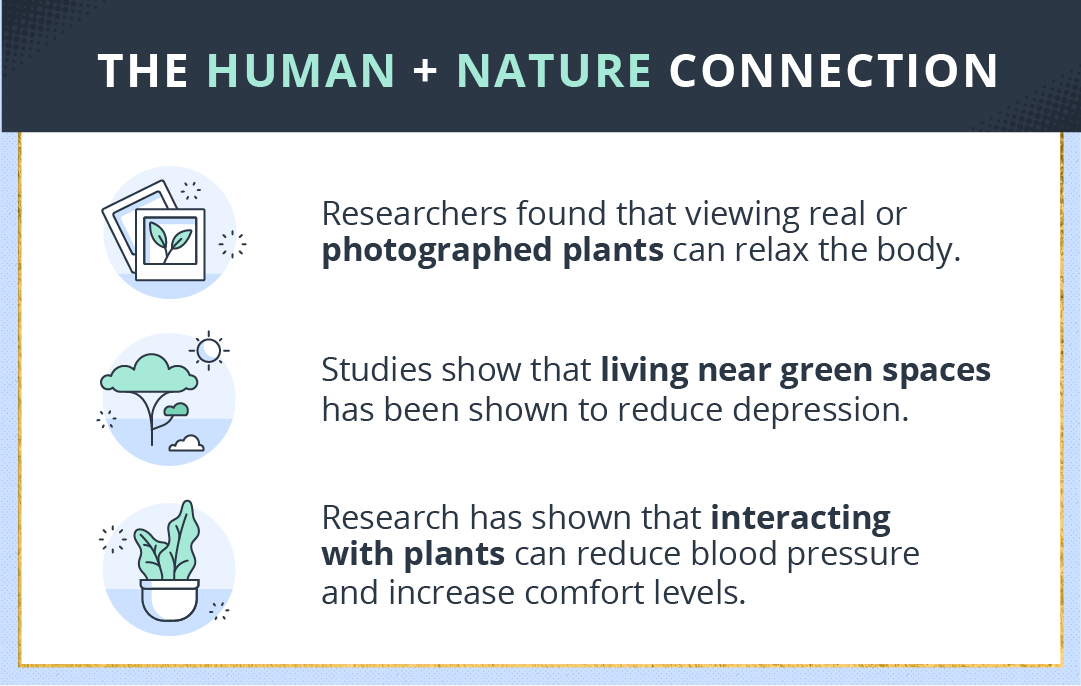
The truth is that just being around natural flora has the ability to make us feel better. Humans have a deep connection to plants and nature that can get lost in the urban hustle and bustle. This connection has been the subject of much research in the last few years, as trends like plant singing and forest bathing have made their way into the news cycle. In fact, many studies have shown that just viewing real or even photographed nature can produce more relaxed body responses.
A study conducted by University of Pennsylvania researchers in 2018 showed that just being near natural green space can greatly improve mental health. Participants were randomly paired with vacant lots in their communities, and then certain lots were put through an “intervention” involving trash pickup and tree planting. For those living close to the “greened” lots, feeling depressed significantly decreased by 41.5%.
Another study showed that specifically interacting with indoor plants can reduce physiological and psychological stress. Participants were monitored while transplanting an indoor plant and while completing a computer task. The results showed that subjects felt more comfortable and soothed after the plant task vs the computer task, along with exhibiting a lower blood pressure.
However, not all plants are going to be up to the task. Just like us, many flowers prefer warmer weather and lots of sunlight, so you’ll need to be selective with which plants to bring indoors with you this winter.
How to Care for 15 Plants That Survive Winter
Below are our recommendations for the top 15 winter indoor plants that will survive and thrive in the indoor chill.
1. Snake Plant
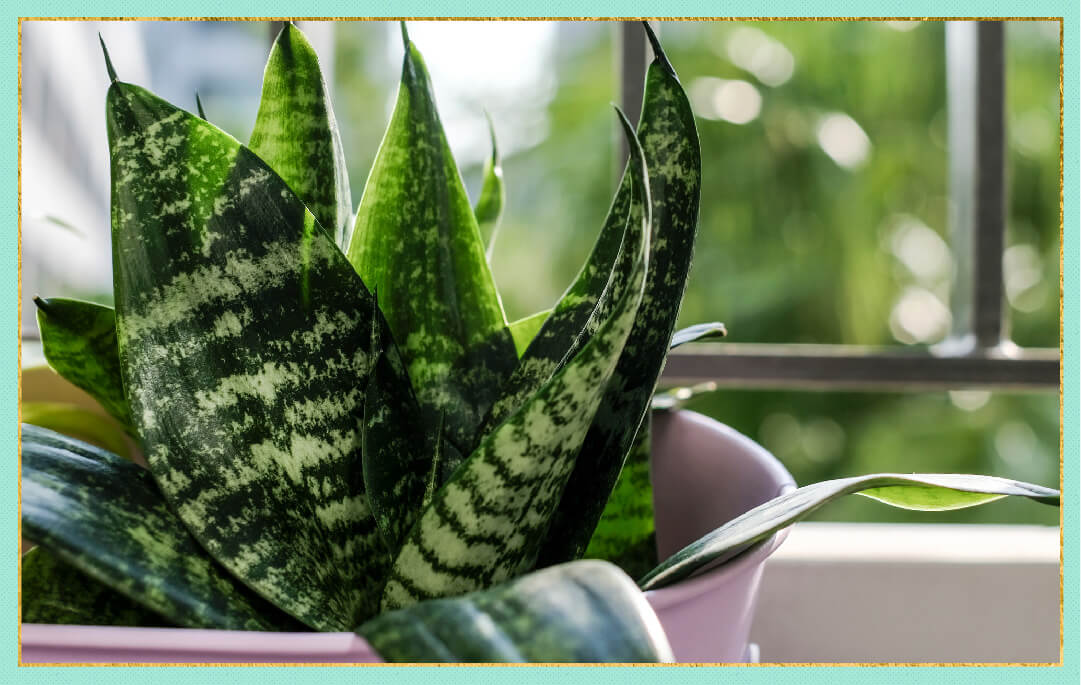
Do you have a “black” thumb? If so, the snake plant may be your perfect floral companion! Known for being one of the easiest plants to care for, Sansevieria can thrive in almost any environment, and it’s slender leaves make it an easy addition to floor or shelf decor.
- Minimum temperature: 55 degrees
- Sunlight: Partial
- Water: Every two weeks
- Flora fact: Snake plants can actually bloom, but may only do so once a year or less
2. Peppermint Plant
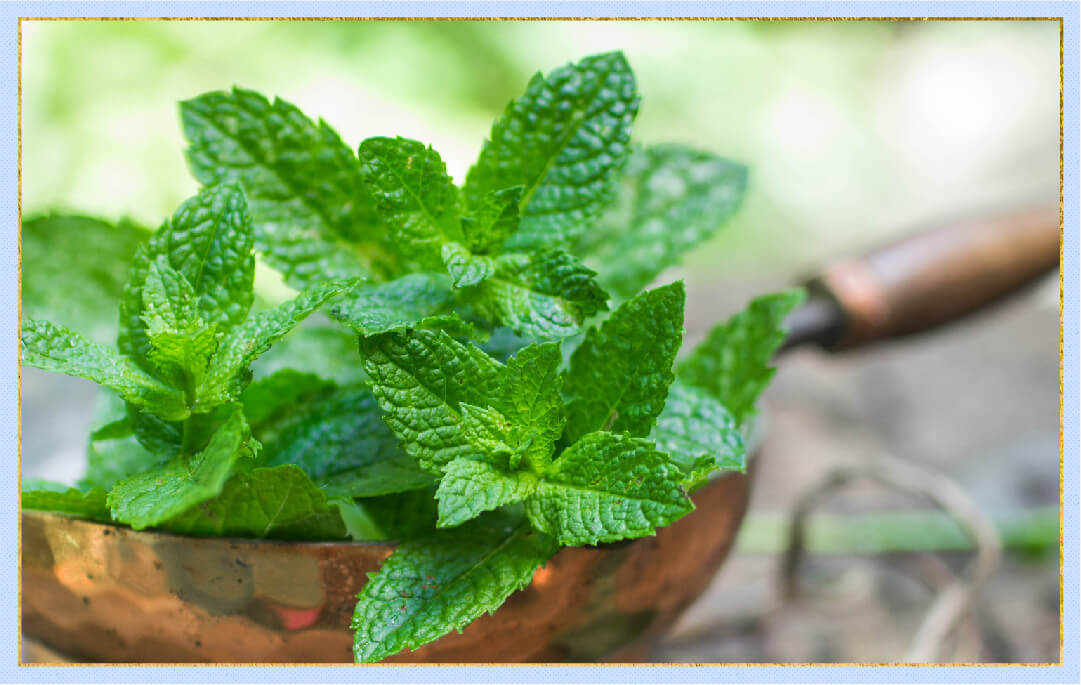
Not only do peppermint leaves smell amazing, but they can also be used as a natural decongestant and digestive aid. Because Mentha x piperita has a tendency to spread, many plant owners like to contain peppermint in a small pot in the kitchen to take advantage of its fresh smell.
- Minimum temperature: Very cold (-40 degrees)
- Sunlight: Full to partial
- Water: Check soil for dryness
- Flora fact: Peppermint is actually a hybrid experiment of the spearmint and watermint plants.
3. Aloe Vera
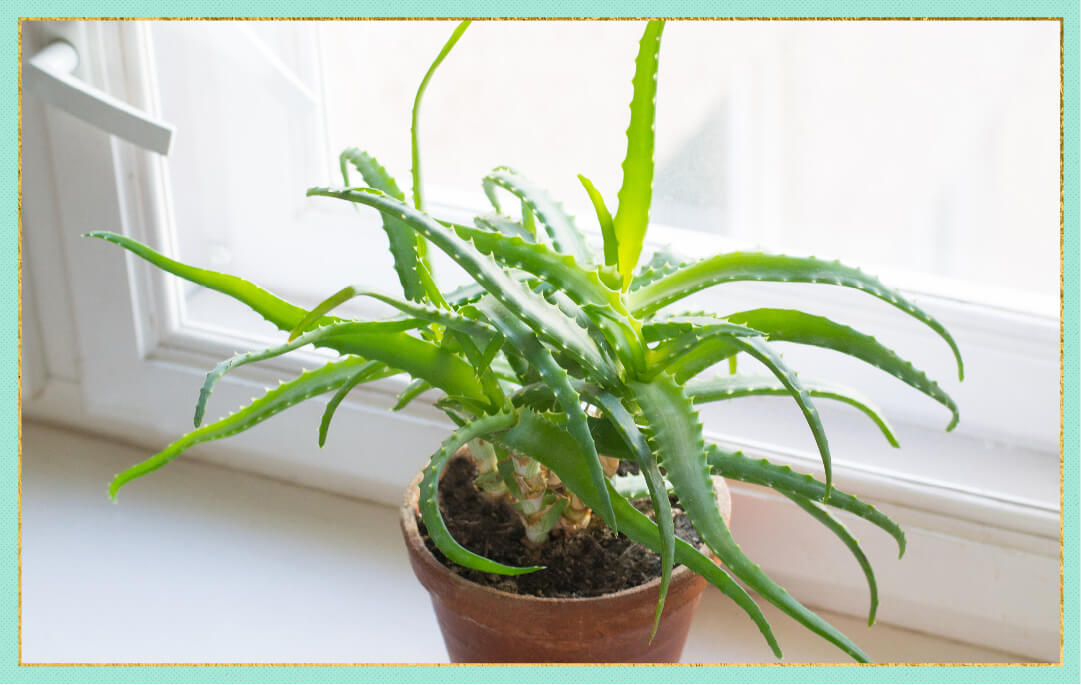
This medicinal plant is well-known for its sunburn-healing properties, and its hardiness makes it a good option to keep around in the winter as well. Aloe vera is actually a large succulent and can be easily transferred to the indoors or outdoors depending on the season.
- Minimum temperature: 40 degrees
- Sunlight: Full
- Water: Once per month
- Flora fact: Cleopatra was rumored to apply aloe vera gel to her skin as part of her beauty routine.
4. Bromeliads
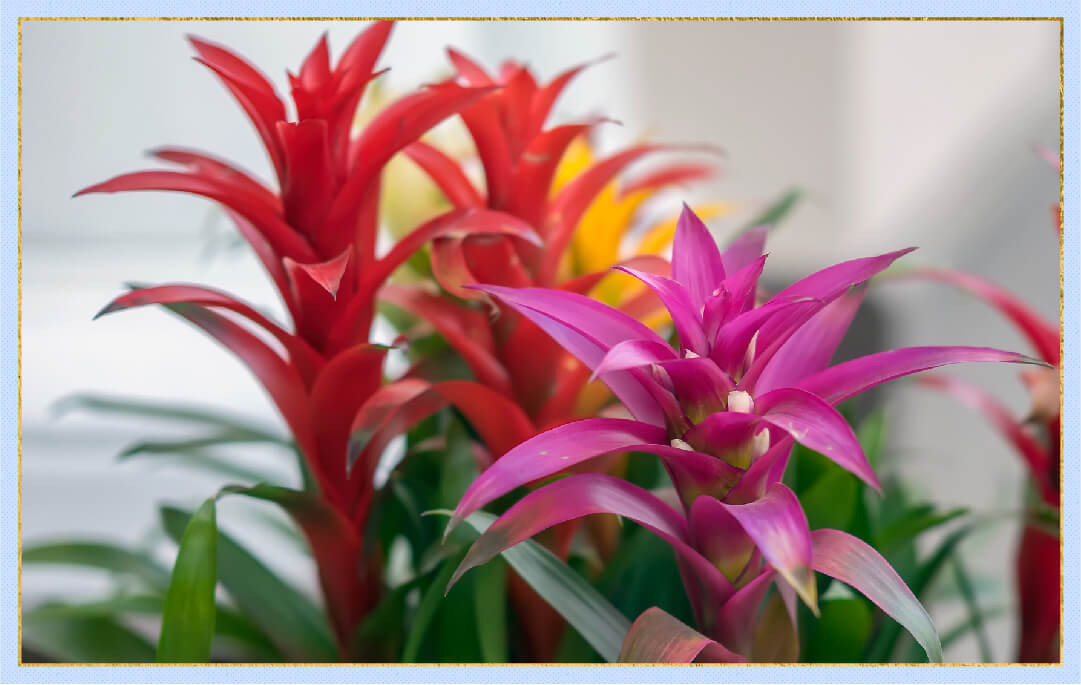
Bromeliad is actually a family name for a type of plant, and there are nearly 3,000 varieties of different Bromeliaceae. This plant is popular for its bright colors and easy care routine for both indoors and outdoors.
- Minimum temperature: 50 degrees
- Sunlight: Full to partial
- Water: Check soil for dryness
- Flora fact: Most bromeliads will produce just one flower in their lifetime, after which the original plant will die.
5. Staghorn Fern
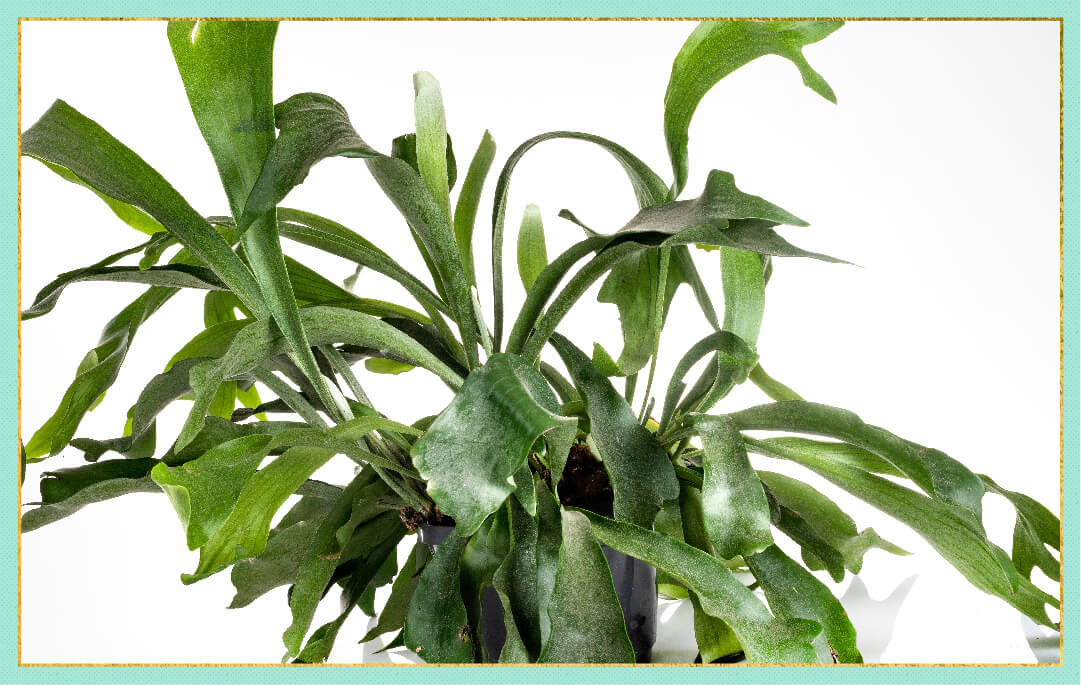
Named for their leaves which resemble the horns of a stag, the staghorn fern can thrive both indoors and out. There are many different variations of Platycerium alcicorne and most are named for other animal ears such as deer and elk. They are usually kept in hanging baskets.
- Minimum temperature: 50 degrees
- Sunlight: Partial
- Water: Once every two weeks
- Flora fact: Staghorn ferns are “epiphytic,” meaning they naturally grow on trees and other vertical surfaces.
6. Rosary Vine
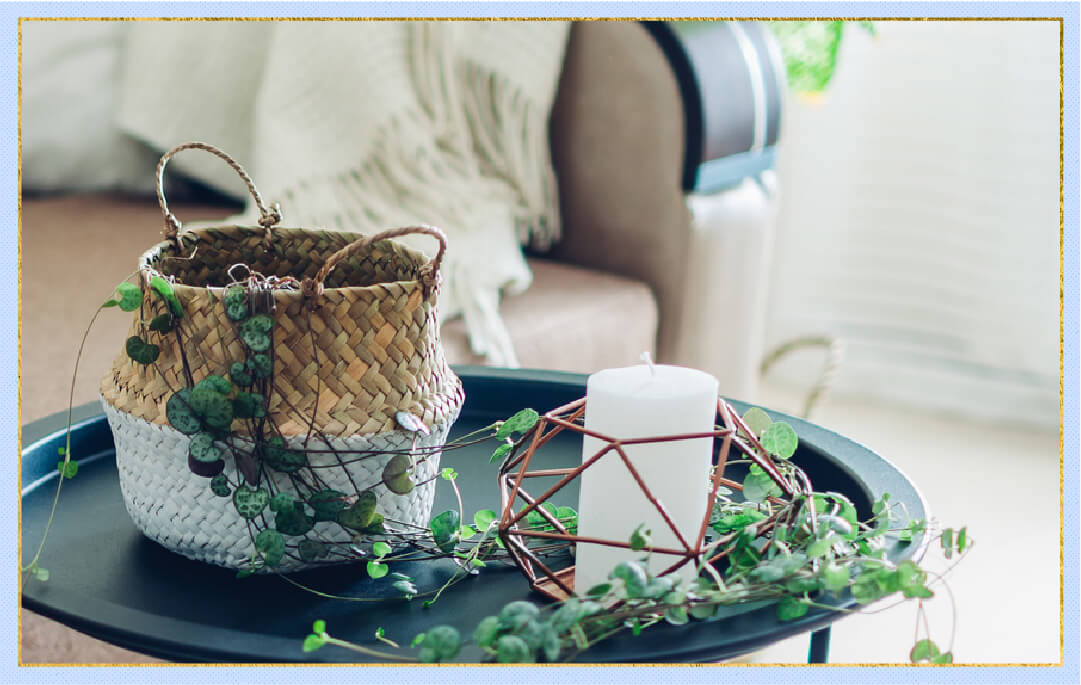
The rosary vine was named for its unique leaf pattern, which resembles rosary beads on a string. Though it starts out small, you’ll want to leave hanging space for Ceropegia woodii which will grow to drape over and hang past its pot for several feet.
- Minimum temperature: 55 degrees
- Sunlight: Full
- Water: Once per week
- Flora fact: When grown outdoors, rosary vines can reach up to 13 feet in length.
7. Eucalyptus

Though we usually think of towering 50-foot trees, this plant can actually grow indoors quite well though you will most likely need to move it outside once the weather warms up. Eucalyptus globulus is also known for its fresh scent, so no need to buy air freshener this winter!
- Minimum temperature: 50 degrees
- Sunlight: Full
- Water: Once per week
- Flora fact: Many species of eucalyptus completely shed their bark every year.
8. Alocasia Polly
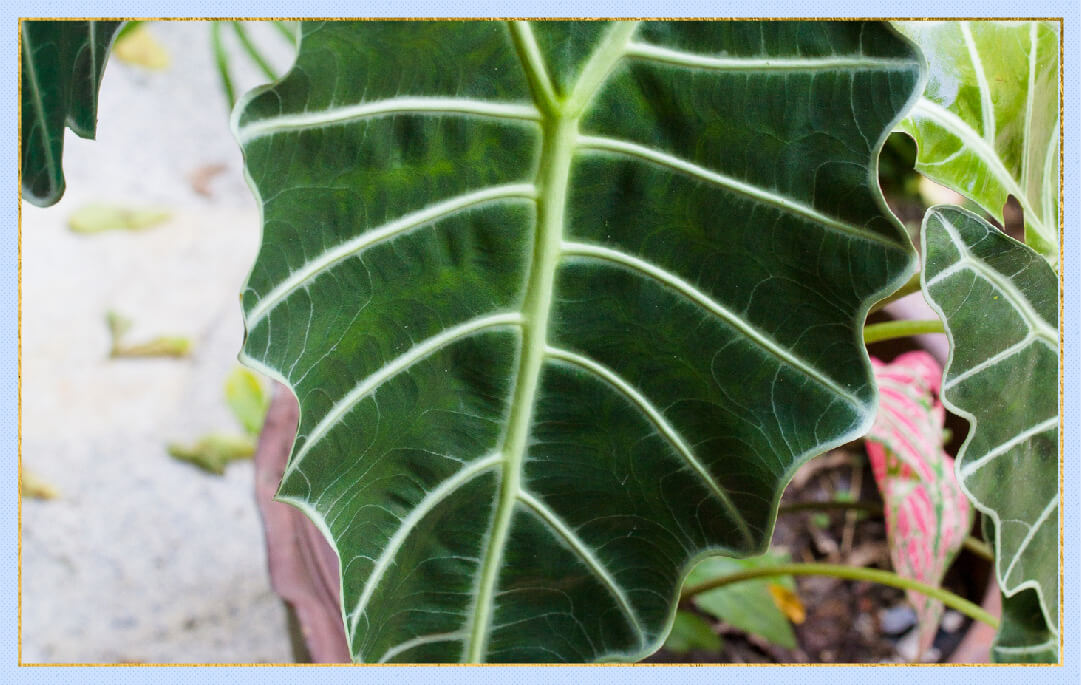
Known for its gorgeous dark green, glossy leaves and unique “elephant ear” shape, Alocasia Polly can add an elegant touch to your winter decor. Alocasia x amazonica is often cultivated in greenhouses but can adjust to potted life indoors if treated well.
- Minimum temperature: 60 degrees
- Sunlight: Partial
- Water: Every 5-7 days
- Flora fact: The shape of this plant has inspired many nicknames, including the Dragon Plant and African Mask.
9. Zebra Plant
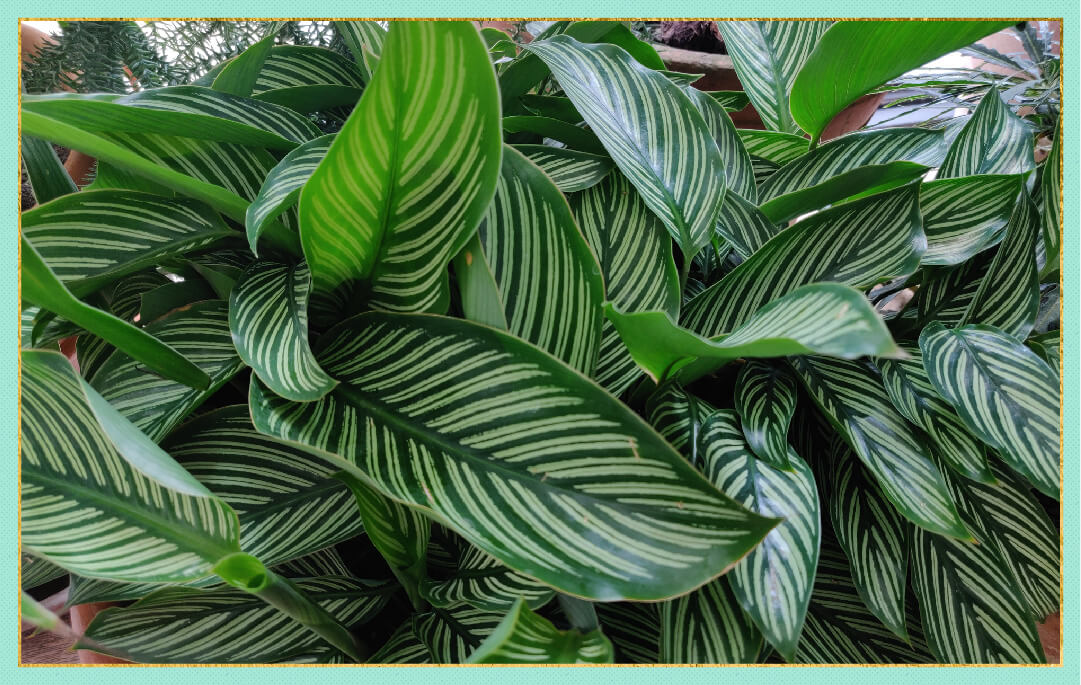
If you’re looking for a winter project to take your mind off of the cold weather, the zebra plant could be just what you need. Because it typically thrives in greenhouses, Aphelandra squarrosa will be a bit more challenging than your average succulent. But with care and attention, this zany plant can be the perfect winter centerpiece.
- Minimum temperature: 60 degrees
- Sunlight: Partial
- Water: Every 2-3 days
- Flora fact: The zebra plant’s flower is bright, saffron yellow and can grow up to eight inches long.
10. Succulents
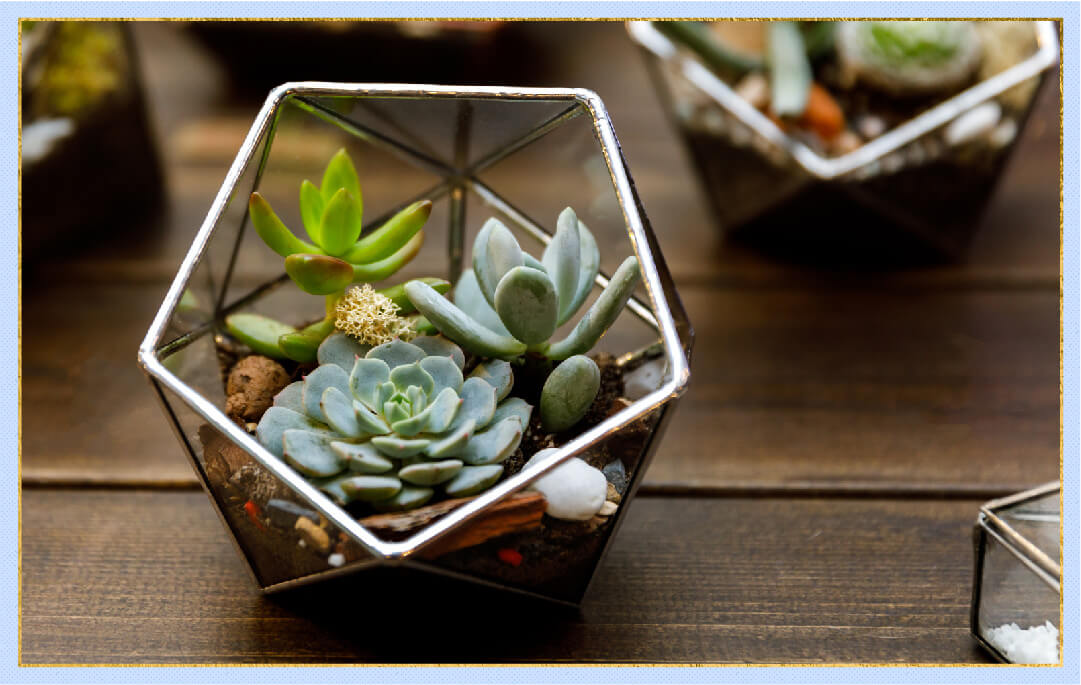
Ah, the humble succulent. With such a variety of shapes and colors to choose from and the absolute lowest minimum care requirements, even the most plant-challenged among us can create a cozy indoor terrarium with these cactus cousins.
- Minimum temperature: 60 degrees
- Sunlight: Full to partial
- Water: Once per week
- Flora fact: “Succulent” comes from the Latin word for juice, referencing succulents’ ability to store water.
11. Spider Plant
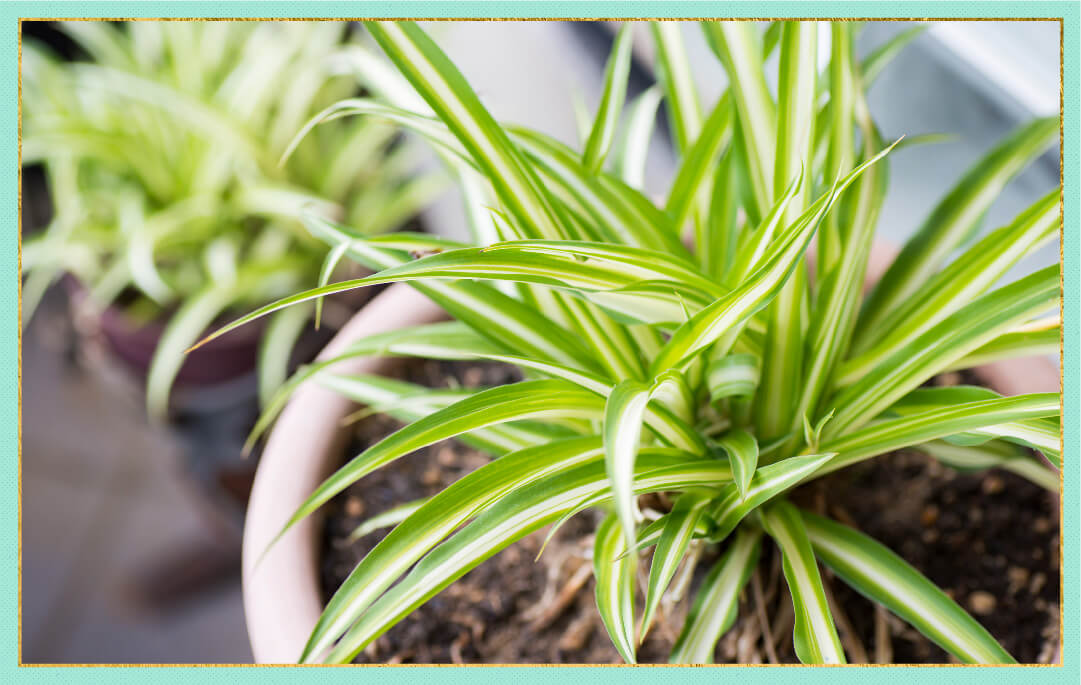
Another low maintenance plant option is the spider plant, or Chlorophytum comosum. This easy-to-grow houseplant is popular as a natural shelf decoration, or as a way to make a workspace feel homier, because of its adaptability to different levels of sunlight.
- Minimum temperature: 35 degrees
- Sunlight: Partial to shady
- Water: Once per week
- Flora fact: Spider plants are natural air purifiers, another reason they’re so popular as houseplants.
12. Rubber Tree
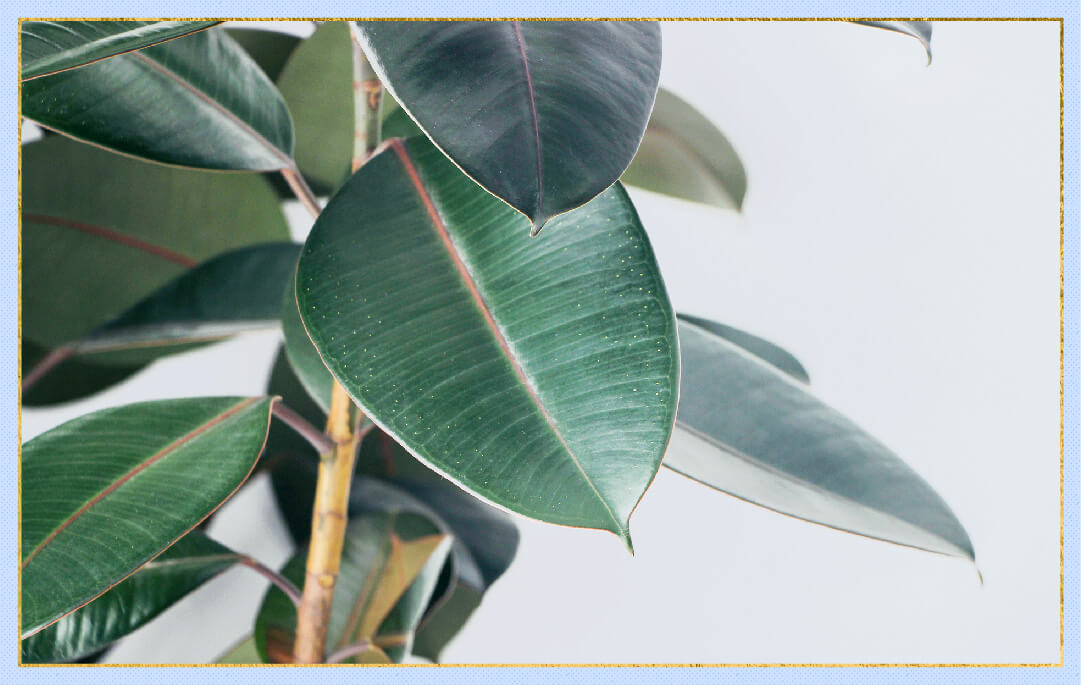
Rubber plants, or Ficus elastica, are becoming increasingly well-known as ideal houseplants because of their size flexibility. If you’re looking to keep a small or medium-sized potted plant, you can simply keep their container size restricted. However, given enough room and sunlight, your rubber plant can grow into a full-fledged rubber tree!
- Minimum temperature: 40 degrees
- Sunlight: Partial
- Water: Check soil for dryness
- Flora fact: Rubber trees have powerful roots that can damage sidewalks and water lines when planted outside.
13. Peace Lily
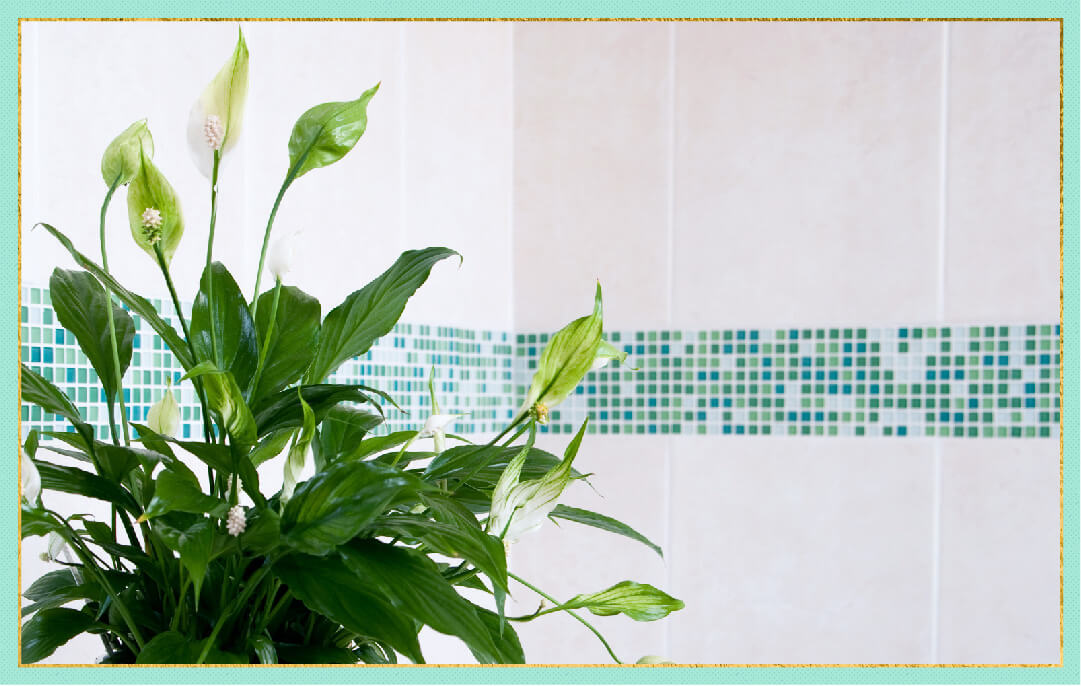
Another wonderful air purifier is the peace lily. Spathiphyllum is particularly well-loved because it is one of the few flowers that almost anyone can grow and maintain. Peace lilies are recognizable by their glossy green leaves and white, elegant blooms.
- Minimum temperature: 40 degrees
- Sunlight: Partial shade
- Water: Once per week
- Flora fact: Peace lilies are actually not lilies at all (Lilium), they belong to the Araceae plant family.
14. Maidenhair Fern
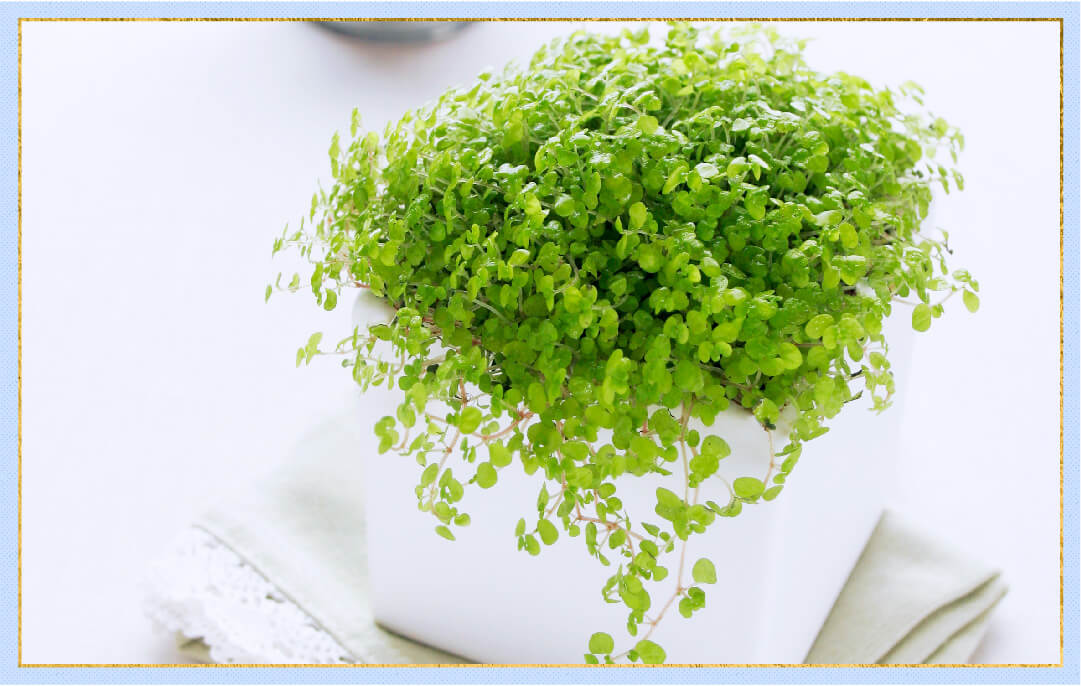
Another plant that will definitely need your undivided attention at the start, a thriving maidenhair fern adds a beautiful, delicate touch to your home. Though Adiantum can be picky, once you master the moisture you’ll have no problem keeping this diva clean and green!
- Minimum temperature: 60 degrees
- Sunlight: Partial
- Water: Every two to three days
- Flora fact: Adiantum is actually the genus for around 250 different varieties of ferns.
15. Chinese Evergreen
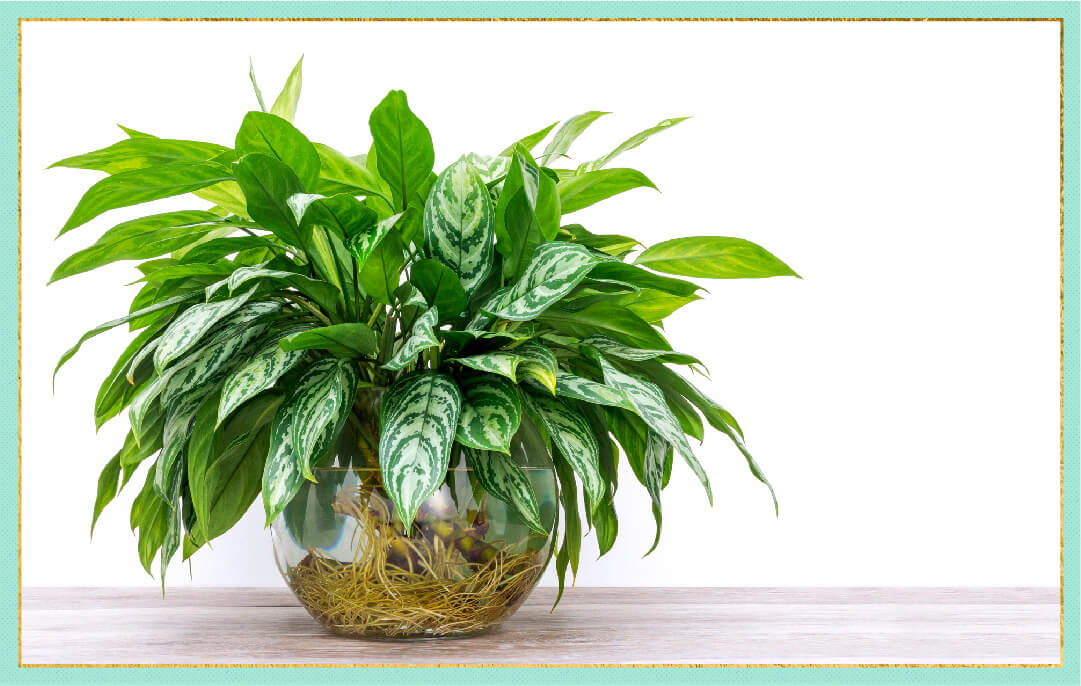
If high-maintenance isn’t your thing, look no further than the Chinese evergreen. This durable houseplant can deal with practically anything you throw at it, so need to worry about leaving your plant baby while you vacation to warmer climes. However, if you’re looking to do better than just survive, Chinese evergreens do thrive under certain conditions.
- Minimum temperature: 55 degrees
- Sunlight: Partial shade
- Water: Once every other week
- Flora fact: Chinese evergreens grow in a wide variety of colors, including “dalmatian” pink!
To take our winter indoor plants care instructions with you, download the visual guide below:

Boost your mood and combat winter sadness this new year by surrounding yourself with hardy houseplants. Caring for another living thing and being around nature will help you forget about the winter gloom and look forward to spring. Landlords, adding plants that survive winter for showings can be a great added touch, or you can gift a winter houseplant to a new tenant to say thank you and establish a good relationship right off the bat. For more apartment advice and tenant screening services, visit TurboTenant.
Are you seeking comprehensive strategies to ready your rental property for the cold months ahead, beyond merely adorning it with vibrant winter plants? Dive into our detailed blog post and accompanying video guide on essential winterization techniques tailored for landlords.
Sources: Gardening Know How | Urban Gardeners Republic | House Plant Journal







